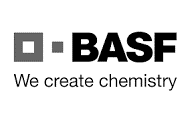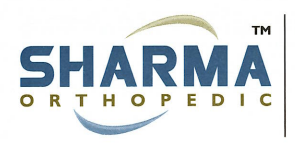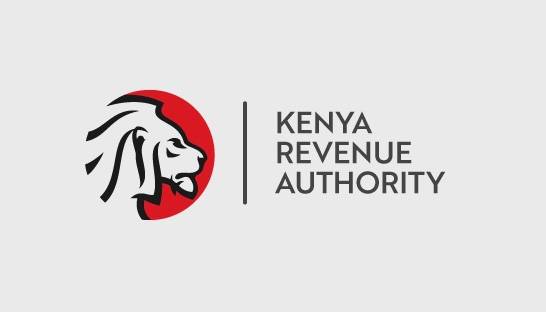Take note that ‘’the provisions of the Explanatory Note to heading 73.08 apply, mutatis mutandis, to this heading(76.10), These two opinions ,include racks of steel or aluminium as metal structures of 7308 or 7610. This is another pointer to the WCOs anticipated classification of steel racks. This further confirms the accuracy of our proposed classification.
The Commissioner, Customs and Border Control
Kenya Revenue Authority
P.O Box 48240
Nairobi
Dear Madam
REF: Request for Advance Ruling
We are writing to request for an advance ruling for Steel Storage Racking System and Accessories or Complete Racking System Made of Steel, as supported by Section 248(A) of the EACCMA quoted below for ease of reference. We propose classification under Heading 7308.90 of the Common External Tariff(CET). Our client is expecting to import the Steel Racking System in the next one month. The detailed description(Manufacturers Manual) and Images of the item are attached at the end of this letter. The classification of the said item has been subject to classification disputes between us and KRA officers in the field. The headings involved are 7308 and 9403. Therefore, a binding decision will go a long way in facilitating trade. We will therefore demonstrate that the classification should be 7308.90.
Section 28(A) of the EACCMA
248A. (1) A person intending to import goods, may make a written application to the Commissioner
for advance binding rulings on any of the following—
(a) tariff classification.
(b) rules of origin; or
(c) customs valuation.
(2) Subject to subsection (1) and upon direction from the Commissioner, the applicant shall furnish to the Commissioner sufficient information that may be used to make the decision.
(3) The Commissioner shall within thirty days of receipt of the sufficient information issue an advance ruling or give reasons for the inability to issue an advance ruling on the application.
(4) The decision issued under subsection (3) shall be binding on the Commissioner and the applicant for a period not exceeding twelve months.
Description of the Steel Racking System
The pallet racking is used to store unitized pallet cargo and is equipped with roadway stackers and other storage and transportation machinery. The high-rise shelves are mostly monolithic structures, which are generally welded by steel profiles (with pallets), connected by horizontal and vertical tie rods and beams. Pallet racks are the most widely used. They are used with forklifts and are free to pick up any cargo in any position. They are simple in structure, easy to operate and store, and safe. Heavy duty shelves can be used with different accessories, such as support bars, wire cages, steel plates, wood panels, steel mesh, etc. to meet different needs.
Pallet racking are most widely used, it is used with forklift that can pick up any goods of any location freely, with the features of simply structure, easy operation and storage, safety, etc. Heavy duty racking can be used with different accessories, e.g., support bars, wire cages, steel plates,…
1) Pallets can be located, accessed, and moved individually.
2) Rapid handling of almost all types of pallet goods.
3) Infinitely adjustable and offering a wide range of options and components to accommodate specialized needs.
4) Maximizes space use in any warehouse configuration while retaining optimum product accessibility.
5) Strength and rigidity prevent compression damage to goods.
6) Bottom level of pallets can be stored on the floor, lowering structure costs.
Structural Features:
(1) 100% of any chosen characteristic. Handling machinery such as forklifts can reach any cargo space for storage operations, storage operations easy and fast.
(2) to lower the truck requirements, ordinary truck can be used, if you want to make full use of space, more than three meters above normal high to go with warehouse trucks can.
(3) is a standard heavy-duty shelf to store one kind of shelf heavy goods most economical and practical, it has been overwhelming majority of customers of all ages.
(4) because it can access any of cargo goods characteristics, so a channel corresponding to the left and right sides of the cargo, the relative alleys, though, pushed, gravity heavy shelf products, utilization is not great.
Analysis of Section XV Notes, Chapter 73 Notes, Heading 73.08 Notes, and Section
Section XV: BASE METALS AND ARTICLES OF BASE METAL: Notes.
1.‑ This Section does not cover :
(k) Articles of Chapter 94 (for example, furniture, mattress supports, luminaires and lighting fittings, illuminated signs, prefabricated buildings);
The steel Racking system is an article of steel. This Note eliminates possible classification in heading 9403.
GENERAL:
This Section covers base metals (including those in a chemically pure state) and many articles thereof. A list of goods of base metal not covered by this Section is reproduced at the end of this Explanatory Note. The Section also includes native metals separated from their gangues, and the mattes of copper, nickel or cobalt. Metallic ores and native metals still enclosed in their gangues are excluded (headings 26.01 to 26.17).
In accordance with Note 3 to this Section, throughout the Nomenclature, the expression “base metals” means : iron and steel, copper, nickel, aluminium, lead, zinc, tin, tungsten (wolfram), molybdenum, tantalum, magnesium, cobalt, bismuth, cadmium, titanium, zirconium, antimony, manganese, beryllium, chromium, germanium, vanadium, gallium, hafnium, indium, niobium (columbium), rhenium and thallium.
Each of the Chapters 72 to 76 and 78 to 81 covers particular unwrought base metals and products of those metals such as bars, rods, wire or sheets, as well as articles thereof, except certain specified articles of base metal which, without regard to the nature of the constituent metal, are classified in Chapter 82 or 83, these Chapters being limited to the specified articles.
As per the General part of the Section XV, notes, articles of base metals are classifiable under this section, the rack is made of steel, therefore classifiable under this section
(B) ARTICLES OF BASE METALS
In accordance with Section Note 7, base metal articles containing two or more base metals are classified as articles of that metal which predominates by weight over each of the other metals, except where the headings otherwise require (e.g., copper‑headed iron or steel nails are classified in heading 74.15 even if the copper is not the major constituent). The same rule applies to articles made partly of non‑metals, provided that, under the General Interpretative Rules, the base metal gives them their essential character.
In calculating the proportions of the metals present for the purposes of this rule, it should be noted that :
- All varieties of iron and steel are regarded as the same metal.
The implication of section XV Note (B) is that, if the base metal gives the essential character, as is the case with the steel racking, then the article is classifiable under this section. Items of heading 9403(furniture) do not derive their essential character from the metal used in its construction
(C) PARTS OF ARTICLES
In general, identifiable parts of articles are classified as such parts in their appropriate headings in the Nomenclature.
However, parts of general use (as defined in Note 2 to this Section) presented separately are not considered as parts of articles but are classified in the headings of this Section appropriate to them. This would apply, for example, in the case of bolts specialised for central heating radiators or springs specialised for motor cars. The bolts would be classified in heading 73.18 (as bolts) and not in heading 73.22 (as parts of central heating radiators). The springs would be classified in heading 73.20 (as springs) and not in heading 87.08 (as parts of motor vehicles).
Section XV Note C indicates that parts of articles of base metal that are not general use parts are to be classified with the parent article. The steel racking is imported unassembled for ease of transportation; therefore the different steel components will be classified under 7308.
Analysis of heading 7308
73.08 Structures (excluding prefabricated buildings of heading 94.06) and parts of structures (for example, bridges and bridge sections, lock gates, towers, lattice masts, roofs, roofing frame works, doors and windows and their frames and thresholds for doors, shutters, balustrades, pillars and columns), of iron or steel; plates, rods, angles, shapes, sections, tubes and the like, prepared for use in structures, of iron or steel (+).
7308.90 Other
This heading covers complete or incomplete metal structures, as well as parts of structures. For the purpose of this heading, these structures are characterised by the fact that once they are put in position, they generally remain in that position. They are usually made up from bars, rods, tubes, angles, shapes, sections, sheets, plates, wide flats including so called universal plates, hoop, strip, forgings or castings, by riveting, bolting, welding, etc. Such structures sometimes incorporate products of other headings such as panels of woven wire or expanded metal of heading 73.14. Parts of structures include clamps and other devices specially designed for assembling metal structural elements of round cross section (tubular or other). These devices usually have protuberances with tapped holes in which screws are inserted, at the time of assembly, to fix the clamps to the tubing.
Apart from the structures and parts of structures mentioned in the heading, the heading also includes products such as :
Pit head frames and superstructures; adjustable or telescopic props, tubular props, extensible coffering beams, tubular scaffolding and similar equipment; sluice gates, piers, jetties and marine moles; lighthouse superstructures; masts, gangways, rails, bulkheads, etc., for ships; balconies and verandas; shutters, gates, sliding doors; assembled railings and fencing; level crossing gates and similar barriers; frameworks for greenhouses and forcing frames; large scale shelving for assembly and permanent installation in shops, workshops, storehouses, etc.; stalls and racks; certain protective barriers for motorways, made from sheet metal or from angles, shapes or sections.
The heading also covers parts such as flat rolled products, “wide flats” including so called universal plates, strip, rods, angles, shapes, sections, and tubes, which have been prepared (e.g., drilled, bent, or notched) for use in structures.
The heading further covers products consisting of separate rolled bars twisted together, which are also used for reinforced or prestressed concrete work.
The heading does not cover :
(e) Movable shelved furniture (heading 94.03).
The following extracts are from heading 7308 further support our proposed classification
- Structures and parts of structures
- plates, rods, angles, shapes, sections, tubes, and the like, prepared for use in structures, of iron or steel (+).
- This heading covers complete or incomplete metal structures, as well as parts of structures
- They are usually made up from bars, rods, tubes, angles, shapes, sections, sheets, plates, wide flats including so called universal plates, hoop, strip, forgings or castings, by riveting, bolting, welding,
- large scale shelving for assembly and permanent installation in shops, workshops, storehouses, etc.; stalls and racks
- The heading does not cover : (e) Movable shelved furniture (heading 94.03).
The steel racking is a steel structure, it is made of different designs of steel (e.g., angles, shapes, sections etc), the heading covers incomplete metal structures as well as parts. Extract ( e ) explicitly describes the anticipated import, therefore as per Rule 1 of the rules of classification we, have to classify the item under heading 7308. Take Note of Extract ( f ), this heading does not cover ‘’Movable shelved furniture of heading 9403. Therefore, the nomenclature rules out classification under heading 9403.
°
WCO HS Classification Number 2 Adopted in 1962(Heading 7308.90)
- Angles, perforated, prepared for use in the assembly of metal structures (racks, sets of shelves, furniture, stairs, scaffolding, roofing frameworks, etc.), presented separately or in sets :
(i) Not being unassembled or disassembled articles classifiable with assembled articles of the corresponding kind :
Of steel.
(ii) Being unassembled or disassembled articles classifiable with assembled articles of the corresponding kind :
(Heading applicable to the assembled article).
See also Opinion 7610.90/1.
Adoption : 1962
WCO HS Classification Opinion Number 1 Adopted in 1962(Heading 7610.90)
- Angles, perforated, prepared for use in the assembly of metal structures (racks, sets of shelves, furniture, stairs, scaffolding, roofing frameworks, etc.), presented separately or in sets :
(i) Not being unassembled or disassembled articles classifiable with assembled articles of the corresponding kind :
Of aluminium alloy.
(ii) Being unassembled or disassembled articles classifiable with assembled articles of the corresponding kind :
(Heading applicable to the assembled article).
See also Opinion 7308.90/2.
Adoption : 1962
Take note that ‘’the provisions of the Explanatory Note to heading 73.08 apply, mutatis mutandis, to this heading(76.10), These two opinions ,include racks of steel or aluminium as metal structures of 7308 or 7610. This is another pointer to the WCOs anticipated classification of steel racks. This further confirms the accuracy of our proposed classification.
Analysis Chapter 94 Notes
Furniture: bedding, mattresses, mattress supports, cushions and similar stuffed furnishings; luminaires and lighting fittings, not elsewhere specified or included illuminated signs, illuminated name plates and the like; prefabricated buildings
For the purposes of this Chapter, the term “furniture” means :
(A) Any “movable” articles (not included under other more specific headings of the Nomenclature), which have the essential characteristic that they are constructed for placing on the floor or ground, and which are used, mainly with a utilitarian purpose, to equip private dwellings, hotels, theatres, cinemas, offices, churches, schools, cafés, restaurants, laboratories, hospitals, dentists’ surgeries, etc., or ships, aircraft, railway coaches, motor vehicles, caravan trailers or similar means of transport. (It should be noted that, for the purposes of this Chapter, articles are considered to be “movable” furniture even if they are designed for bolting, etc., to the floor, e.g., chairs for use on ships). Similar articles (seats, chairs, etc.) for use in gardens, squares, promenades, etc., are also included in this category.
Headings 94.01 to 94.03 cover articles of furniture of any material (wood, osier, bamboo, cane, plastics, base metals, glass, leather, stone, ceramics, etc.). Such furniture remains in these headings whether or not stuffed or covered, with worked or unworked surfaces, carved, inlaid, decoratively painted, fitted with mirrors or other glass fitments, or on castors, etc.
It should, however, be noted that furniture is excluded if it incorporates more than minor components (e.g., monograms, bands, ferrules, etc.) of precious metal or of metal clad with precious metal (Chapter 71).
In addition to the exclusions referred to in the individual Explanatory Notes below, this Chapter also excludes :
(d) Springs, locks and other parts of general use as defined in Note 2 to Section XV, of base metal (Section XV), and similar goods of plastics (Chapter 39).
Analysis of heading 94.03 Notes
94.03 ‑ Other furniture and parts thereof.
9403.10 ‑ Metal furniture of a kind used in offices
9403.20 ‑ Other metal furniture
9403.30 ‑ Wooden furniture of a kind used in offices
9403.40 ‑ Wooden furniture of a kind used in the kitchen
9403.50 ‑ Wooden furniture of a kind used in the bedroom
9403.60 ‑ Other wooden furniture
9403.70 ‑ Furniture of plastics
‑ Furniture of other materials, including cane, osier, bamboo or similar materials :
9403.82 ‑ ‑ Of bamboo
9403.83 ‑ ‑ Of rattan
9403.89 ‑ ‑ Other
‑ Parts :
9403.91 ‑ ‑ Of wood
9403.99 ‑ ‑ Other
This heading covers furniture and parts thereof, not covered by the previous headings. It includes furniture for general use (e.g., cupboards, show‑cases, tables, telephone stands, writing‑desks, escritoires, book‑cases, and other shelved furniture (including single shelves presented with supports for fixing them to the wall), etc.), and also furniture for special uses.
The heading includes furnitures for :
(1) Private dwellings, hotels, etc., such as : cabinets, linen chests, bread chests, log chests; chests of drawers, tallboys; pedestals, plant stands; dressing‑tables; pedestal tables; wardrobes, linen presses; hall stands, umbrella stands; side‑boards, dressers, cupboards; food‑safes; bedside tables; beds (including wardrobe beds, camp‑beds, folding beds, cots, etc.); needlework tables; stools and foot-stools (whether or not rocking) designed to rest the feet, fire screens; draught‑screens; pedestal ashtrays; music cabinets, music stands or desks; play‑pens; serving trolleys (whether or not fitted with a hot plate).
(2) Offices, such as : clothes lockers, filing cabinets, filing trolleys, card index files, etc.
(3) Schools, such as : school‑desks, lecturers’ desks, easels (for blackboards, etc.).
(4) Churches, such as : altars, confessional boxes, pulpits, communion benches, lecterns, etc.
(5) Shops, stores, workshops, etc., such as : counters; dress racks; shelving units; compartment or drawer cupboards; cupboards for tools, etc.; special furniture (with cases or drawers) for printing‑works.
(6) Laboratories or technical offices, such as : microscope tables; laboratory benches (whether or not with glass cases, gas nozzles and tap fittings, etc.); fume‑cupboards; unequipped drawing tables.
The heading does not include :
(a) Travelling chests, trunks, and the like, not having the character of furniture (heading 42.02).
(b) Ladders and steps, trestles, carpenters’ benches, and the like not having the character of furniture; these are classified according to their constituent material (headings 44.21, 73.26, etc.).
(c) Builders’ fittings (e.g., frames, doors, and shelves) for cupboards, etc. to be built into walls (heading 44.18 if of wood).
(d) Waste‑paper baskets (of plastics, heading 39.26; of basket or wickerwork, heading 46.02; of base metal, headings 73.26, 74.19, etc.).
(e) Hammocks (generally heading 56.08 or 63.06).
(f) Mirrors designed for standing on the ground, such as cheval‑glasses, swing‑mirrors for shoe‑shops, tailors, etc. (heading 70.09).
(g) Armoured or reinforced safes (heading 83.03). On the other hand, containers specially designed to resist fire, impact and crushing and whose walls in particular do not offer any serious resistance to attempts at breaking them open by drilling or cutting are classified in this heading.
(h) Refrigerators, ice cream machines, etc. (i.e., cabinets, etc., having the character of furniture but also equipped either with a refrigerating unit or with an evaporator of a refrigerating unit, or designed to receive such equipment) (heading 84.18) (see Note (1) (e) to this Chapter). However, ice‑boxes, ice‑chests and the like, and also insulated cabinets not equipped or designed to contain an active refrigerating element but insulated simply by glass fibre, cork, wool, etc., remain classified in this heading.
(ij) Furniture specially designed for containing or providing a stand for sewing machines, whether or not it has a subsidiary use as furniture when the machine is not in use; protective covers, drawers, extensions, and other component parts of such furniture (heading 84.52).
(k) Furniture specially designed as part of apparatus of heading 85.18 (heading 85.18), of heading 85.19 or 85.21 (heading 85.22) or of headings 85.25 to 85.28 (heading 85.29).
(l) Drawing tables fitted with instruments such as pantographs, (heading 90.17).
(m) Dentists’ spittoons (heading 90.18).
(n) Mattress supports (heading 94.04).
(o) Standard lamps and other luminaires and lighting fittings (heading 94.05).
(p) Billiard tables, or other furniture specially constructed for games, of heading 95.04, and tables for conjuring tricks, of heading 95.05.
The following extracts are from Chapter 94 Notes. further support our proposed classification
(a)Any “movable” articles (not included under other more specific headings of the Nomenclature
(b)which are used, mainly with a utilitarian purpose to equip private dwellings, hotels, theatres, cinemas, offices, churches, schools, cafés, restaurants, laboratories, hospitals, dentists’ surgeries, etc., or ships, aircraft
(c)Headings 94.01 to 94.03 cover articles of furniture of any material (wood, osier, bamboo, cane, plastics, base metals, glass, leather, stone, ceramics, etc
The steel racking is included under a more specific heading in the nomenclature(73.08), therefore extract (a) from chapter 94 notes rules out classification under 9403. Extracts a, b, c. indicate what kind of items should be considered as furniture, and the steel racking system is not one of them.
The following extracts are from Heading 94.03 Notes. further support our proposed classification
The heading does not include :
(1)Ladders and steps, trestles, carpenters’ benches, and the like not having the character of furniture; these are classified according to their constituent material (headings 44.21, 73.26, etc.).
(2) Armoured or reinforced safes (heading 83.03). On the other hand, containers specially designed to resist fire, impact and crushing and whose walls in particular do not offer any serious resistance to attempts at breaking them open by drilling or cutting are classified in this heading
(3) ij) Furniture specially designed for containing or providing a stand for sewing machines, whether or not it has a subsidiary use as furniture when the machine is not in use; protective covers, drawers, extensions, and other component parts of such furniture (heading 84.52).
A reading of extracts 1,2,3 from heading 94.03 notes clearly shows that if an item does not have the character of furniture or likeness to the items defined in heading 94.03, then it should be classified under the heading with articles of its constituent material.
Please consider our presentation and make a binding ruling on the HS classification of Steel Storage Racking System and Accessories or Complete Racking System Made of Steel
Yours faithfully
Janron Consult
Janron Consult, Tax Consultant Kenya, Customs Tax Consultant Kenya, Tax Advisory Kenya
Talk to Janron Consult for the following:
Ministry of Health Exemptions
Treasury Exemptions
Advance Ruling Application to KRA
Objection to KRA Rulings on Customs Value
Objections to KRA Rulings on HS Classification
Objection to KRA Rulings on Customs Value
Objections to KRA Rulings on HS Classification








